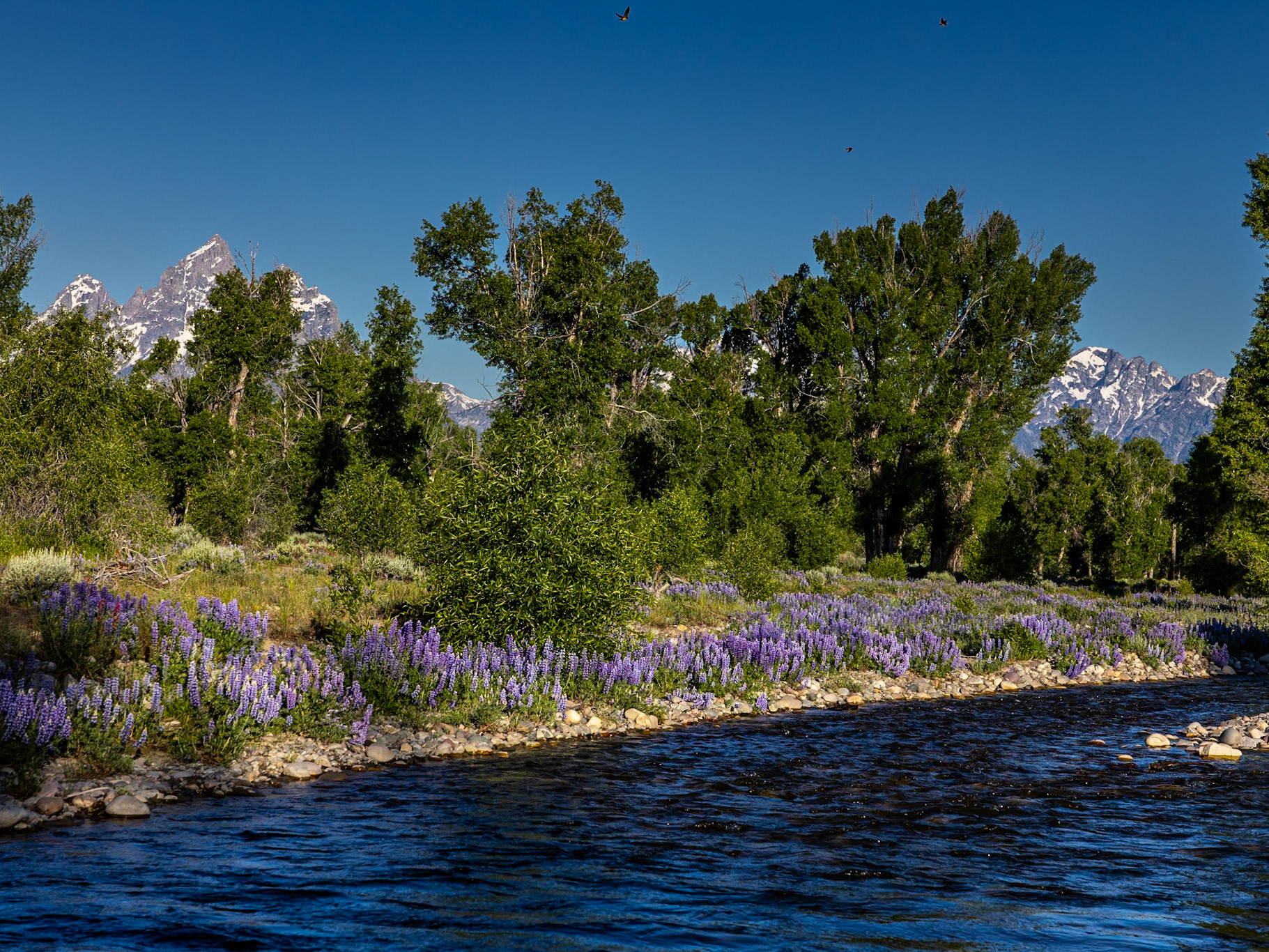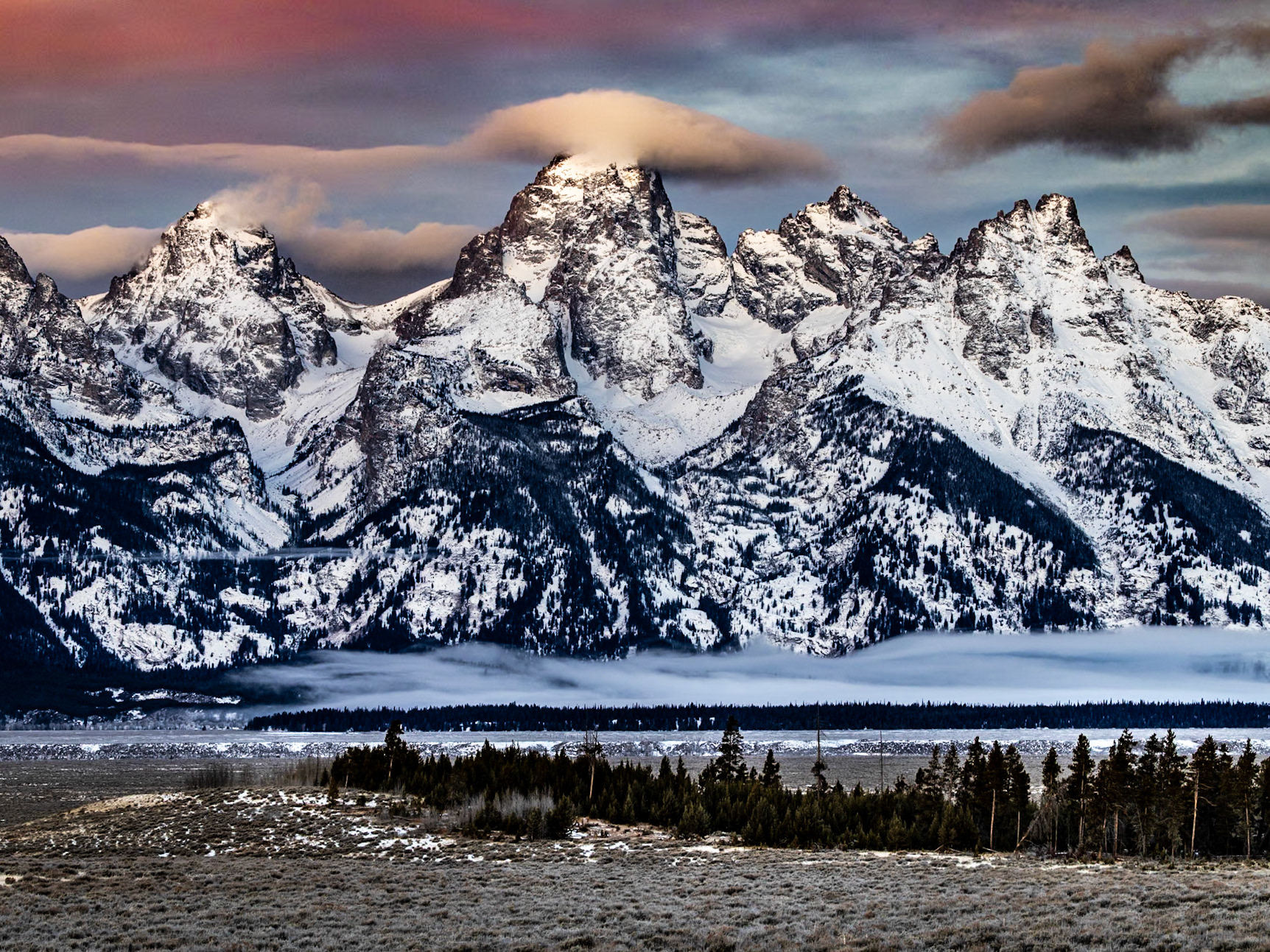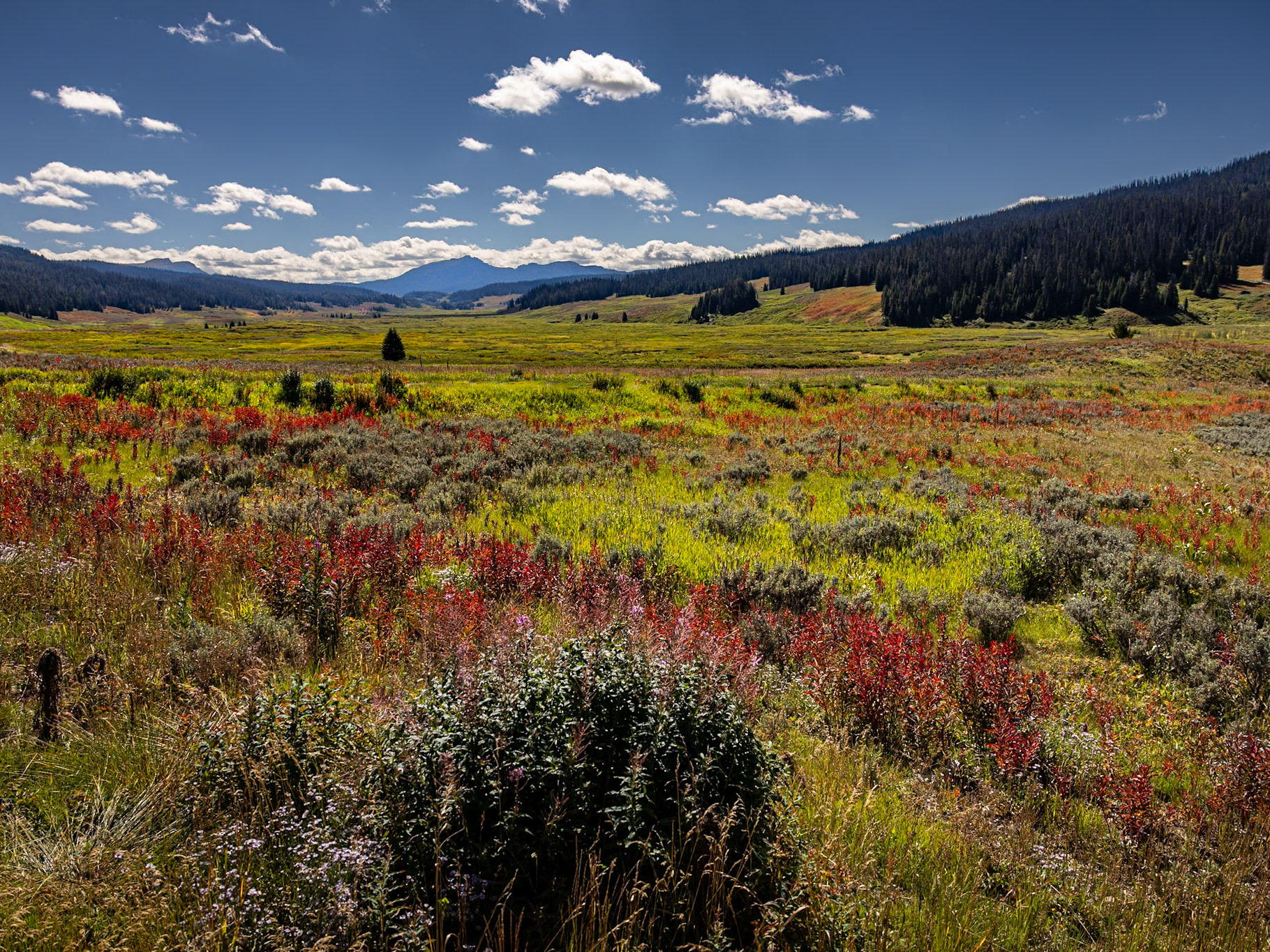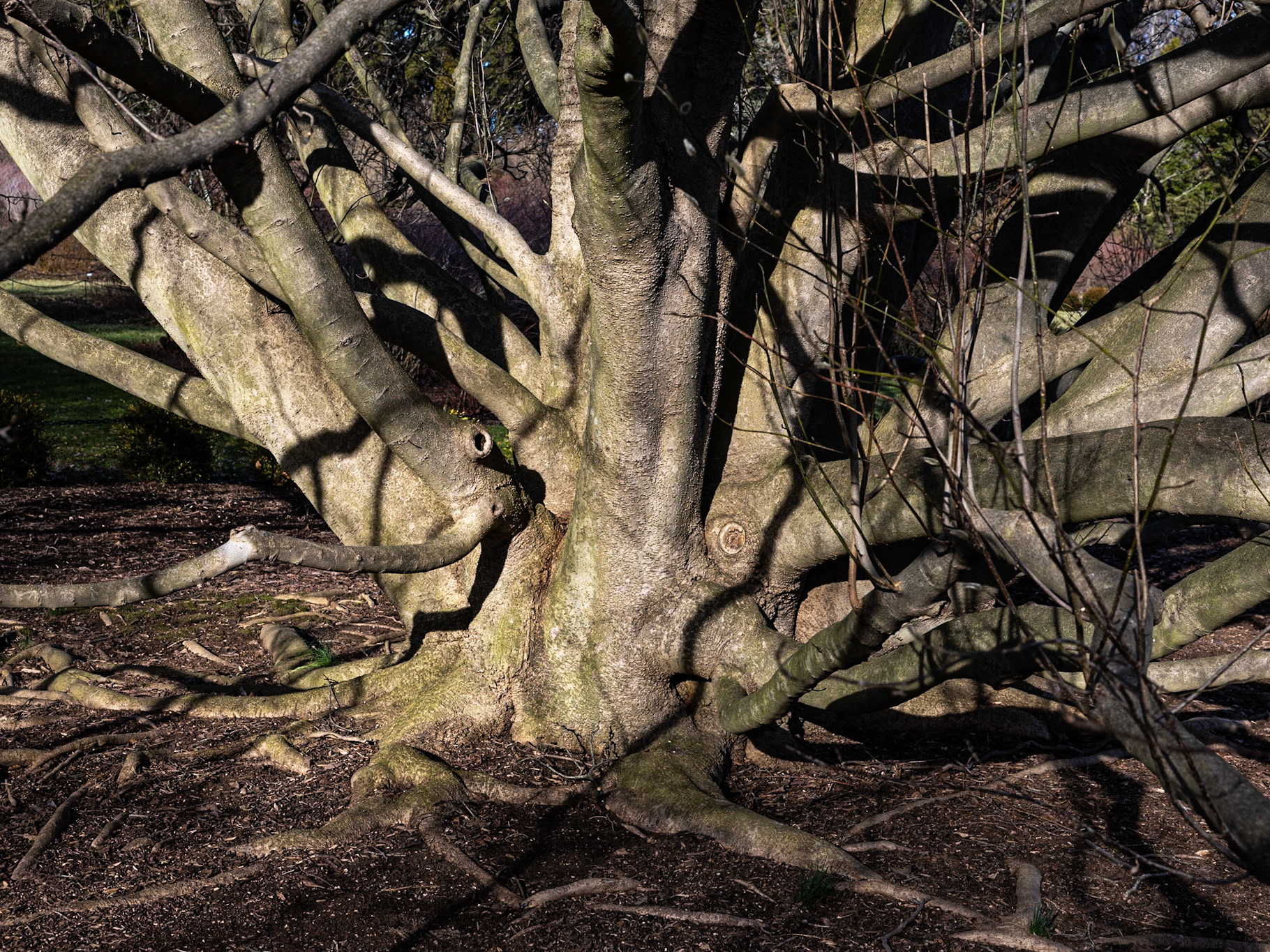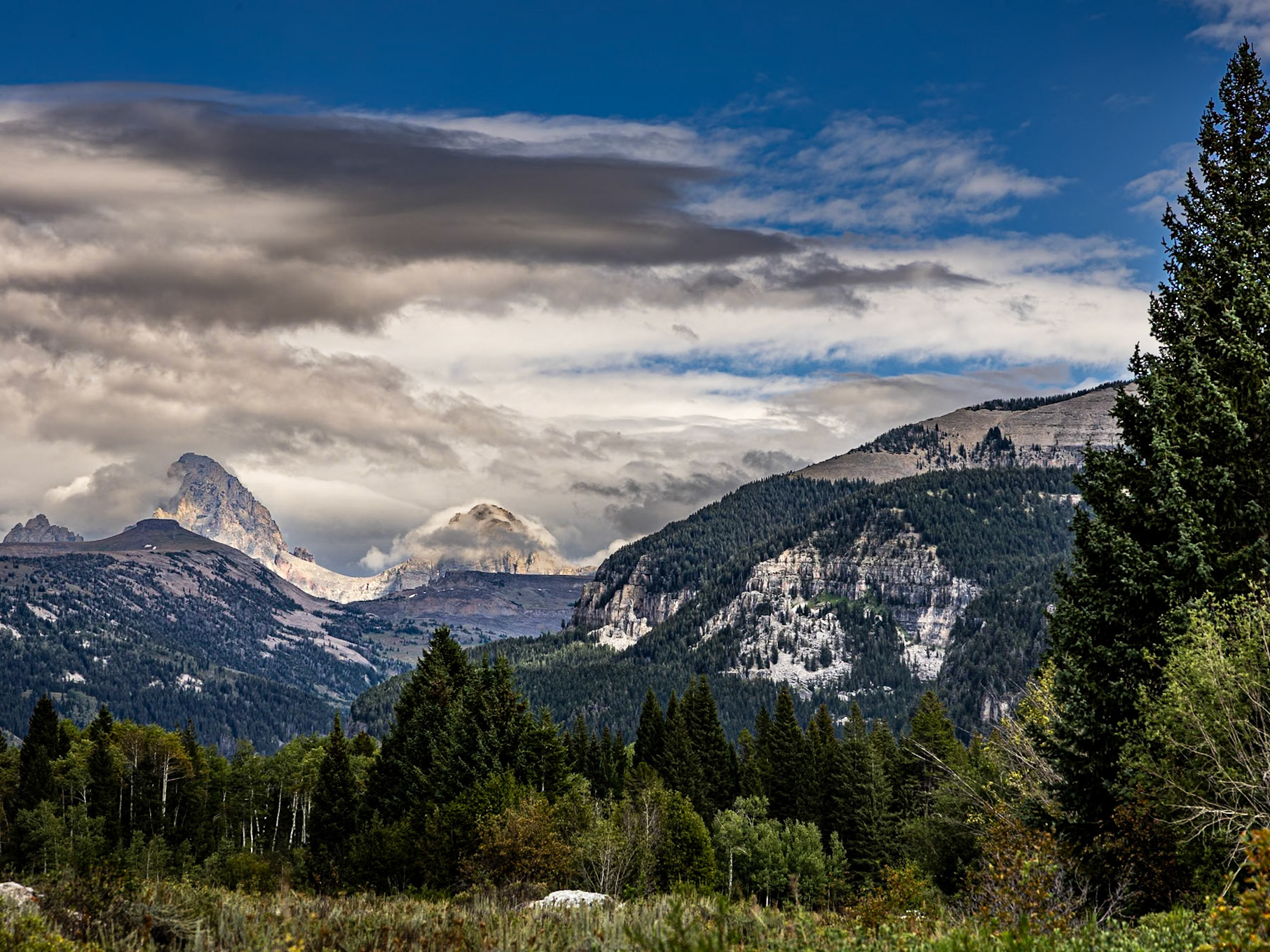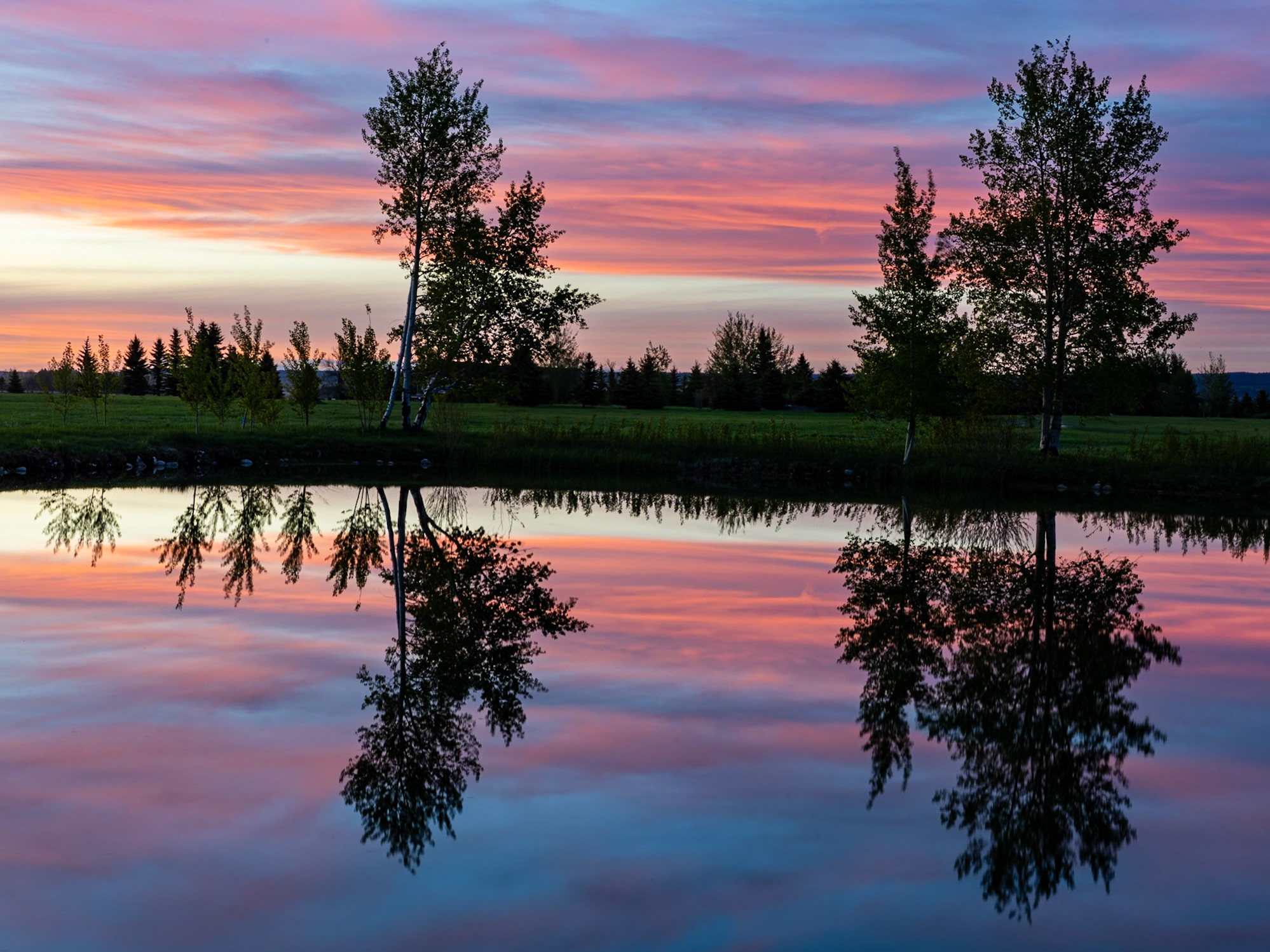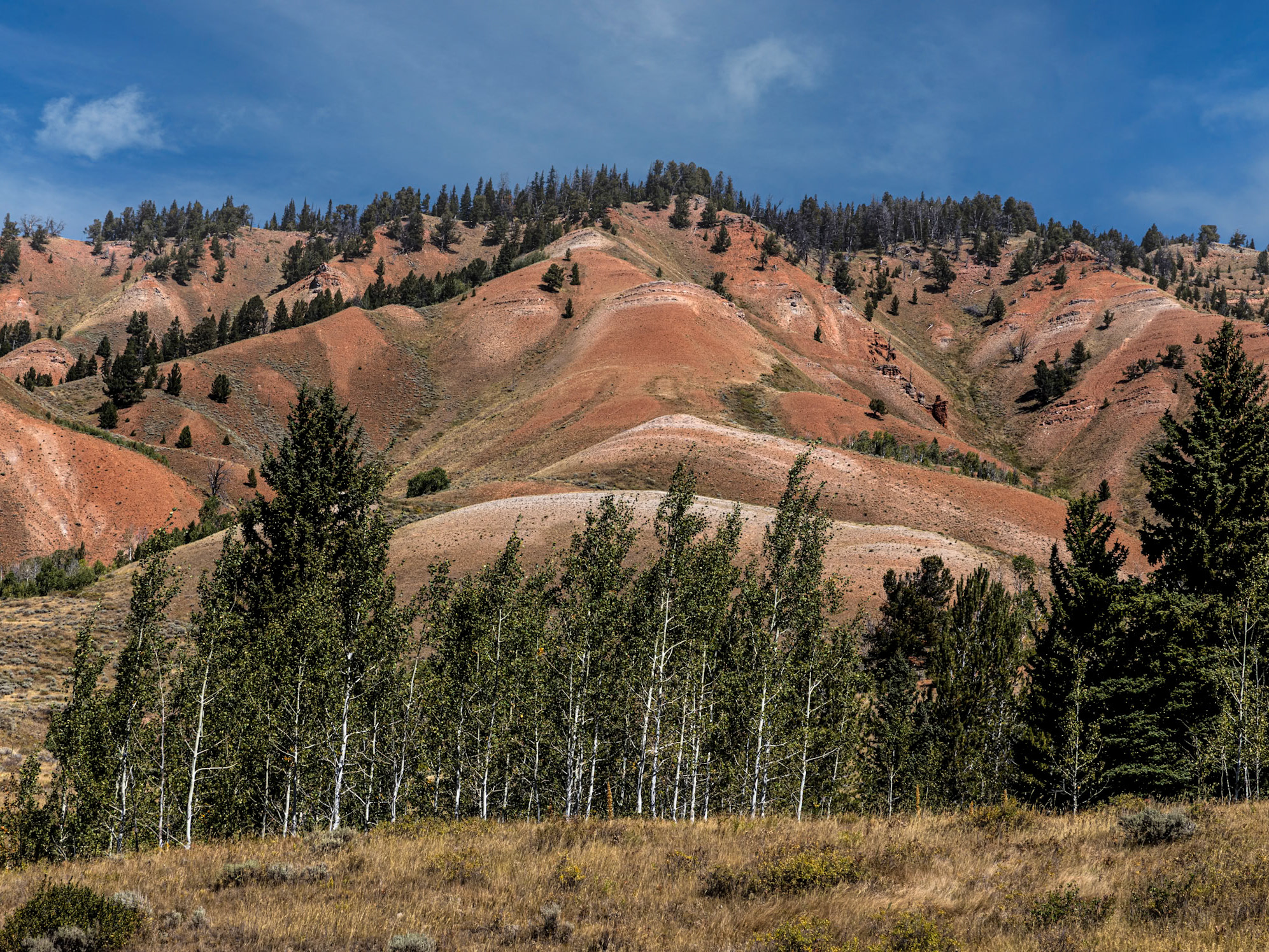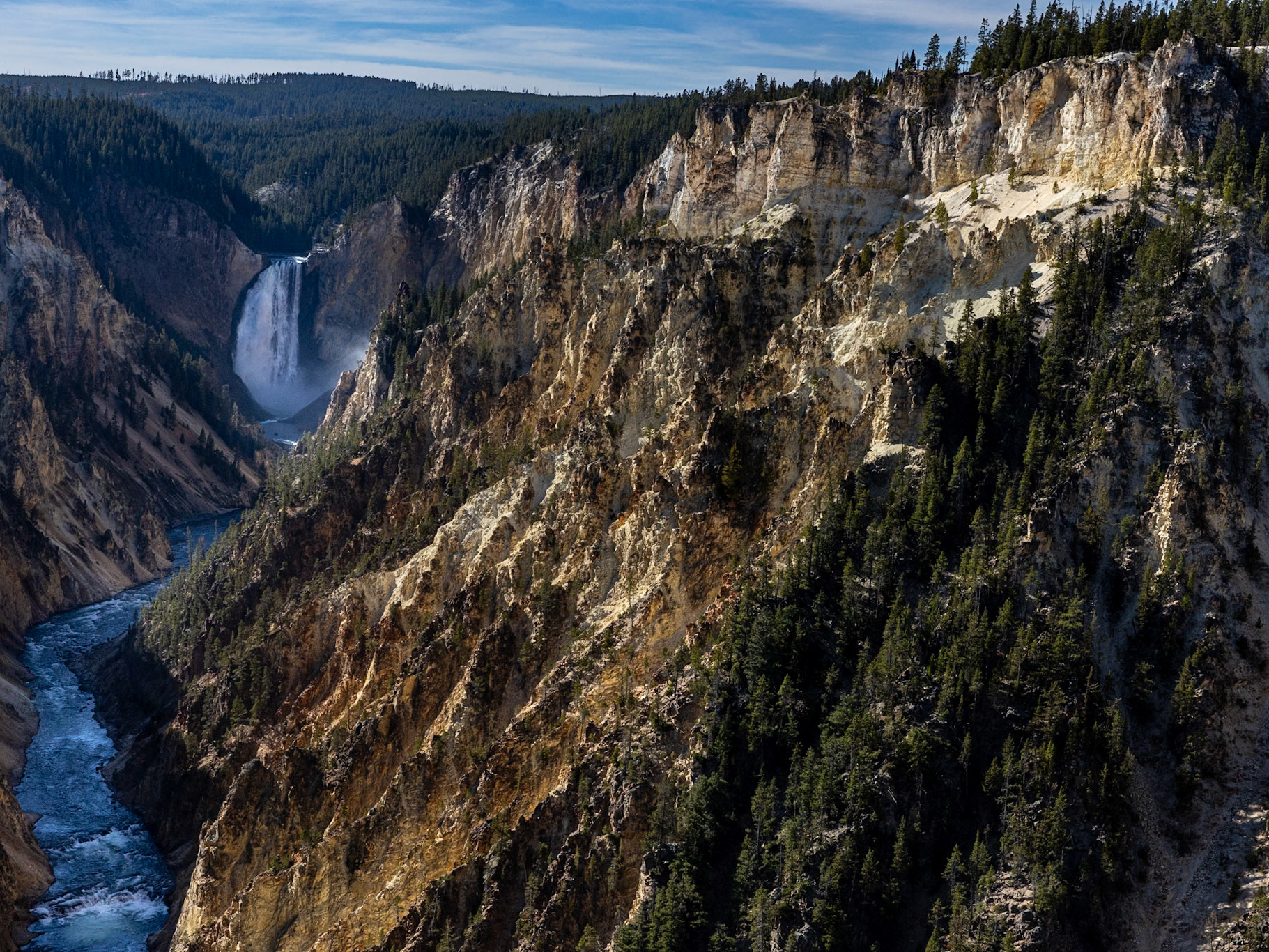The Teton Mountain Range is one of the most dramatic and beautiful natural features in the world. As mountain ranges go, it is relatively young, as is the adjacent valley of Jackson Hole. They formed within the last 5 million years when a "hinge fault" in the earth's crust lifted the range and dropped the valley floor. The "hinge" itself lies along today's border between Wyoming and Idaho to the west of the Tetons. Because the block of stone that would become the Teton Mountain Range rose almost vertically while the valley floor dropped, the eastern face of the mountains appears to rise straight up with virtually no foothills -- from about 6,300 feet on the valley floor to almost 13,800 at the summit of the Grand. The west side of the mountain range, on the other hand, rises gradually from the hinge with many meandering canyons and moderately sloping foot hills. The shapes of the mountain peaks were formed by tectonic activity and repeated glacial sculpting. These same forces produced the beautiful string of lakes that decorate the neck of the range inside Grand Teton National Park (GTNP). The relatively compact size of the Teton Mountain Range is contained almost entirely within GTNP, with some of its edges spilling into the surrounding national forests.
As a subject of photography, the Tetons offer an endless selection of shapes, textures and colors. Adding to the drama are the unusual cloud formations that frequently surround the higher peaks. The West side of the range offers softer and smoother subjects, whereas the views from the East, inside GTNP, display the jagged facade that most visitors know and love. Both faces are spectacular and an endless source of inspiration.
The photos taken from the west were shot mostly in and around Alta WY, whereas those from the East were taken from various locations inside GTNP itself. As a key to orienting yourself, the tip of the Grand appears to lean to the left when seen from the west and to the right when viewed from the east.












































